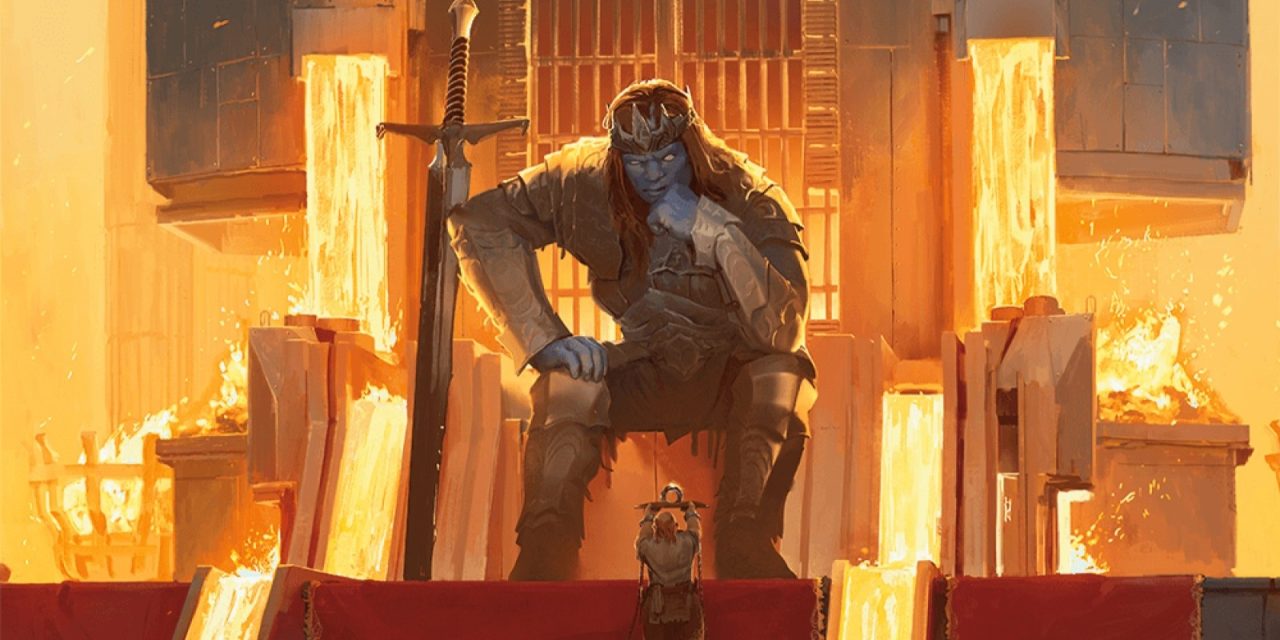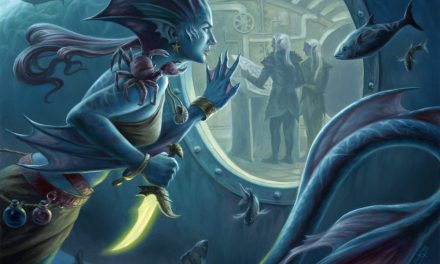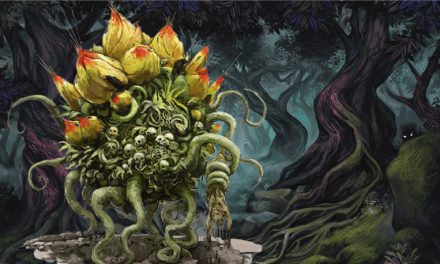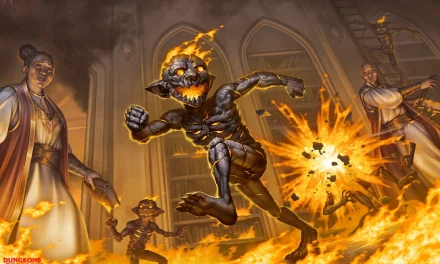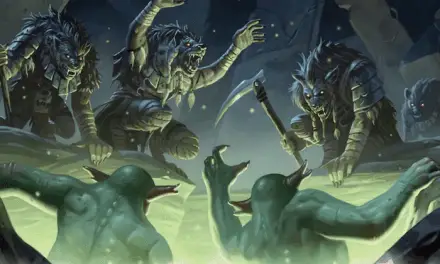Looking for the perfect Lawful Evil war machine? Fire giants might be just the thing you’re looking for!
Fire Giants are known for their fearsome reputation as soldiers as well as their incredible smelting and smith work.
They rage across the countryside destroying and conquering everything in their path. As their war machine marches on, these tyrants are known for forcing the local populace of their conquered territories to serve them.
But these hot-headed tyrants aren’t mindless brutes. Not only are they evil and physically imposing, but they are also intelligent and can present adventuring groups with a “giant challenge”.
When you absolutely and positively need a group of giant nasties to take on, these tyrannical, hierarchical, and militaristic oversized bad guys (and girls) certainly fit the bill!
Welcome to this guide on Fire Giants in D&D 5e!
What Are Fire Giants in D&D 5e?
Giants in 5e D&D are very diverse, and Fire Giants add to that diversity in a big and exciting way. These behemoths are smarter than their cousins the Hill Giants and more organized, disciplined, and trained in the ways of warfare than Frost Giants.
Many players and DMs alike find them to be the most interesting of the evil giant-kin for many reasons, but the main reason is that they are tyrannical villains that complement virtually any campaign perfectly.
Giants that are able to organize whole societies that also have well-trained armies should send shivers up and down the spines of any player, no matter how experienced!
These power-hungry evil beings are extremely dangerous to both sentient life and non-sentient life as well. At least in Fire Giants’ own minds, all other life exists solely to serve their whims.
Because of this, Fire Giants are known for enslaving others for the sole purpose of extracting resources from the local ecosystem, such as wood and coal. Local humanoids are expected to serve Fire Giant rulers by tithing their livestock and crops.
With a strict sense of law and order in their society, Fire Giants take their societal hierarchies very seriously. Common Fire Giants serve their officers, officers serve their generals, and they all serve their Fire Giant kings without question. They’re pretty authoritarian, but then again they are Lawful Evil.
One of the most interesting facets of the Fire giant is the environments in which they are usually encountered. These environments tend to be magma-filled environments with plenty of heat and fire to go around. This adds excitement and natural danger to any campaign that sees you fighting Fire Giants on their home turf!
Fire Giants appear in the 5e Monster Manual alongside other giants (like Stone Giants and Cloud Giants).
Appearance
These big nasty giants almost always have dark coal-like skin tones and fiery orange-red hair.
Fire Giants are extremely stocky and muscular. It’s not inaccurate to think of them somewhat like an oversized dwarf, ironically. They stand about 18 feet tall and average 7,000 lbs. (roughly 2.5 tons). In game terms, they are Huge sized.
As expert masters of the forge, they tend to be very well-equipped. Fire Giants prefer heavier well-crafted armor such as plate mail and mighty, giant greatswords.
In other words, they look very intimidating, and (in this case) you should definitely judge a book by its cover.
If you find yourself in the Fire Giants’ mountainous realms or near one of their massive fortresses or outposts, you should most certainly proceed with caution!
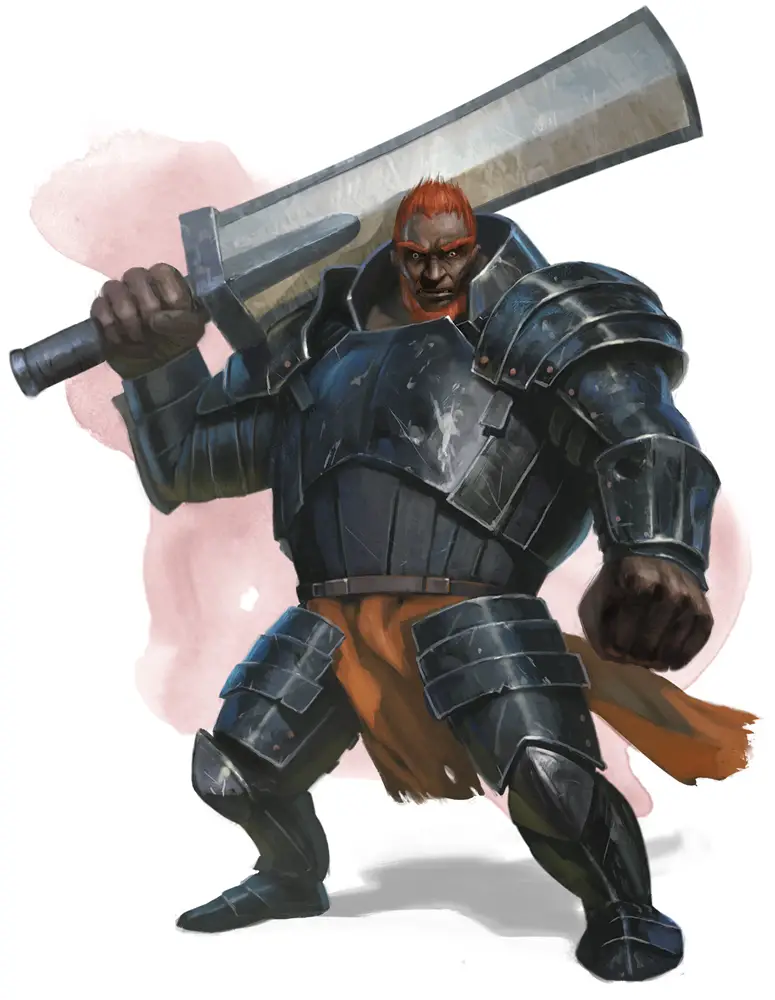
Fire Giant Abilities
Fire giants as you would expect are very strong and hardy creatures.
They have an average intelligence score, but don’t get too comfortable with that fact. Keep in mind that they are excellent battlefield tacticians!
Something that might shock most is that Fire Giants are actually pretty wise and charismatic. These are two great traits considering how much emphasis Fire Giant society puts on organized armies that include officers and strict chains of command.
Fire Giants’ biggest weakness is their subpar Dexterity scores, although with their plate mail armor it’s not much of an issue. Their plate armor gives them an Armor Class of 18 and they average 162 Hit Points (13d12 + 78).
Rounding out their defensive capabilities is their immunity to fire damage. But that’s probably not a surprise…
They have an exceptional Constitution-based Saving Throw bonus of +10 and a small advantage on Charisma-based saving throws with a bonus of +5.
Due to their Wisdom, Fire Giants have a better Perception than many players might assume. If you’re trying to sneak around some Fire Giant sentries, you’ll need to be incredibly sneaky… or lucky… probably both…
When it comes to combat Fire Giants have both ranged and melee actions that work out quite well to their advantage.
However, they truly shine in melee combat where they are able to use their Multiattack action. This allows them to attack twice with their greatswords which do massive amounts of damage (6d6 + 7) and have a 10-foot reach.
As for their ranged weapon attack just like the rest of their kin they hurl rocks. These tend to be large, magma-encrusted rocks with a huge range of up to 240 feet that also do a good chunk of damage (4d10 + 7).
Born and Bred for War
As you’ve probably figured by now, Fire Giants live, eat, and breathe war. They enjoy conquering those they see as beneath them (which is pretty much everyone) and forcing them into servitude.
From the very day a Fire Giant is born until they die, they fully embrace a life of war. Even while a newborn Fire Giant is in the cradle, they are sung songs of battle and conquest!
Fire giants pass down military tactics with each new generation. In fact, nearly every aspect of Fire Giant culture (songs, dances, games, etc) is meant to reinforce their militaristic values.
This leads to a race of giants that are shrewd officers and tacticians on the field of battle. They are not mindless fury machines but rather organized and disciplined students of war and destruction.
Never mistake a Fire Giant for a mindless brute as it will most likely lead to your demise!
Forged in Fire
Fire giants tend to build fortresses near volcanoes or even inside volcanoes. The heat given off by these environments is used to fuel the centerpieces of Fire Giant society, the forge.
These giants tend to build their strongholds out of masterfully-forged iron that glows bright orange from the heat inside.
It should also be mentioned that while Fire Giants shun cold weather, they also sometimes have outposts in such areas. These outposts are fueled by coal and wood rather than magma-filled caverns.
As such, areas around these outposts tend to be widely deforested as the Fire Giants claim every ounce of wood and coal that can be extracted to throw into the fire. Something has to keep the hearth fires burning bright, right?
This brings us to another important point about Fire Giants…
Fire Giants are unapologetic resource raiders and polluters. They cut down whole forests and deplete whole mines with little regard for respecting nature or other beings in the area.
Just when you thought they couldn’t be bigger jerks!
Feudal Tyrants
As mentioned, Fire Giants are very feudal by nature. If there’s one thing they love, it’s their hierarchies. It’s a core part of their entire view and is a large part of why they also love war and conquering “lesser” races.
Needless to say, life under a Fire Giant king is not an easy life at all.
The bottom rung of the Fire Giants’ hierarchy is usually enslaved humanoids who are unfortunate enough to live in a conquered area. These lowly humanoids tend to do all the dirty work as well as provide crops and livestock for their giant-sized kings.
The conquered humanoids that are skilled in crafting and smithing (typically/especially dwarves) are put to work in mines extracting valuable gems and ores. Fire giant crafters rely on these skilled workers so they can go about doing their metalworking and other artisanal endeavors.
Those who are sent to the mines are typically overseen by Fire Giants who rank lower in their society. Conditions in the mines are exceptionally brutal and very few can survive there for long.
In the minds of the Fire Giants, safety is nowhere near as important as the bounty of ore that can be extracted. As the Fire Giant war machine rages on, there will never be a shortage of conquered peoples to send into the mines.
Artists, Smiths, and Crafters
While Fire Giants are best known as conquering tyrants who destroy everything in their path, they do have a more artistic side.
Among the giant races, Fire Giants are known as excellent artists and crafters. Unfortunately for those who aren’t Giants, most of the crafts that Fire Giants produce include imposing iron fortresses and instruments of war and destruction.
Fire Giant crafters are known for their ability to create swords that cleave through armor like hot butter. For protection, they craft massive, sturdy plate armor that their armies don in their quests of destruction.
Whether working with metal or stone, Fire Giants have a well-earned reputation for the quality of what they produce.
To constantly improve upon their designs, Fire Giant smiths experiment with new alloys and techniques. A breakthrough in creating an even more resilient armor, for example, is quickly followed by experiments to make weapons that can pierce that armor.
Who knew that innovation could be so… terrifying?
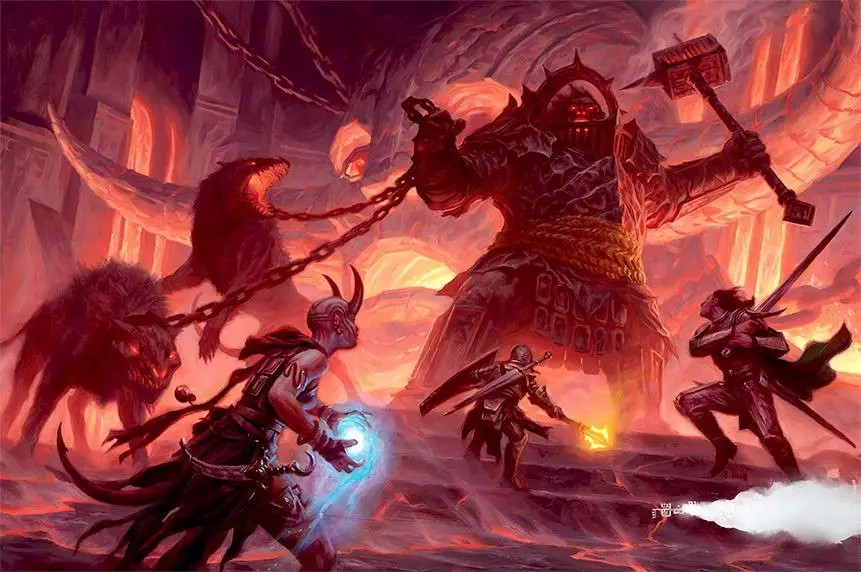
Encountering Fire Giants in D&D 5e
Encountering a lone Fire Giant is rare. Given their militaristic backgrounds, they are often found in groups when outside of their mighty and imposing strongholds.
Fire giants are renowned for their fighting prowess, as well as their tendency to burn, plunder, and destroy everything in their path. Needless to say, “mercy” isn’t exactly a word that Fire Giants are familiar with.
So let’s look at what you can expect on either side of the DM screen when encountering a Fire Giant.
Running Fire Giants for Dungeon Masters
Running a Fire Giant encounter is actually pretty straightforward as a DM.
As mentioned above, they have Multiattack which they can use on their melee weapon attack which just so happens to be a nasty Greatsword with a 10 ft. reach. This is where they hit the hardest, so most Fire Giants will want to quickly close in on their enemies.
But they aren’t useless at a distance. Their ranged attacks consist of hurling huge volcanic rocks at their adversaries which can also be quite dangerous!
While Fire Giants can hurl rocks from up to 240 ft. away, they do so at a disadvantage.
Their first priority is to get within 60 feet of their targets before hurling rocks and will then move another 20 feet to hurl another rock. They will then attempt to use their full move and start using their melee weapon attack to vanquish their foes. It’s a pretty simple strategy.
Fire giants are master tacticians trained in the ways of war with average Intelligence but above-average Wisdom which makes them very dangerous adversaries indeed.
They are able to adapt to combat situations very well and will also use the natural terrain to their advantage.
Additionally, they might use tactics to trap the party or ambush them. If things are looking bad, Fire Giants aren’t scared to make a tactical retreat and retaliate once they’ve had a chance to recover.
Being wise and intelligent in the ways of war also means they are very adept at picking out PCs who dole out a lot of damage but are vulnerable defensively.
So for example, they will likely target a spellcaster with lower AC and hit points that is hurling lightning bolts before focusing on the party’s tanks.
Encountering Fire Giants as a Player
Encountering a Fire Giant as a player can be pretty intimidating and very dangerous. Of course, things also get even more intense when you’re encountering more than one. Unfortunately for players and their characters, Fire Giants are most commonly encountered in groups.
The key to battling fire giants is to keep them at a distance while you throw out out as much damage as possible. Just be sure to avoid spells and attacks that deal fire damage as it will have NO EFFECT!
Once engaged in melee combat, it is important to gang up on the most vulnerable and damaged giants first.
Taking them down as quickly as possible should be a priority. After all, it’s better to only take two greatsword attacks than four, six, or possibly even more!
When in combat with these nasty giants, it’s important to have a plan and the resources to carry out that plan.
Buffs come in handy, as do abilities that allow you to avoid or lessen the damage that Fire Giants can dish out. Anything that gives the party advantages to beat Fire Giants’ impressive armor class, does a lot of damage, or imposes disadvantage on their attacks is useful.
Also, be sure you have plenty of healing potions and spells at the ready. These bad boys can knock your PCs out of action with one or two good rounds of combat if you are not careful.
Additionally, make sure to keep your spellcasters protected so they can deal large chunks of damage while the tanks in your party take the brunt of their giants’ wrath.
Conclusion – Fire Giants in D&D 5e
Fire Giants are another classic and iconic enemy that goes back to the early days of D&D.
And rightfully so!
They’re diabolical and ruthless enemies to go up against. Encounters that feature them are bound to be both terrifying, adrenaline-pumping, and memorable!
In fact, Fire Giants make such excellent enemies that entire campaigns can be centered around them and their kind!
If you’re feeling brave, you can take them on yourself in adventures like Storm King’s Thunder or the 5e version of the AD&D classic Against the Giants (found in Tales From the Yawning Portal).
Have you had any memorable encounters with Fire Giants in your D&D games? Perhaps your group has some helpful tactics for taking them on? Let’s chat in the comments below!
Don’t forget to sign up for the Tabletop Joab newsletter! It’s the best way to get all the latest player guides, DM Tips, news, reviews, and more for D&D 5e right to your inbox!
You can also follow Tabletop Joab on Facebook and Twitter.
If you found this article helpful and want to support the site, you can buy me a coffee here! (It’s not expected, but very appreciated!)

